DAOstack ( Scalable collectivism on the blockchain)
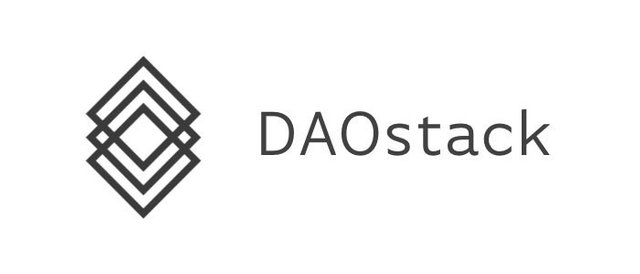
The first generation internet, web 1.0 in the 90's revolutionised the way information was accessed and dispersed through the use of networks. About ten years later web 2.0 was born and the internet became more programable which gave birth to applications such as social media platforms, highly customisable websites and the peer to peer economy that brought organisations and consumers closer. It accelerated the speed of information and commerce.
The original vision of the world wide web created by Tim Berner Lee was to be a decentralised database where all parties could share information freely and for free. But that was not the case with web 2 which brought us the peer to peer economy but with platforms in the middle that controlled the information and dictated the rules. The web became highly centralised.
Missing form this global network was a means to transfer value in way that worked as seamless as the information it transmitted and a way to get back to the vision of desectralisation. Along came Bitcoin and its underlying technology the blockchain. Spawned from this mysterious innovation was Ethereum with smart contracts and many other protocols created by individuals that glimpsed into the future and saw that the re-organisation of the current centralised network was imperative and that decentralization was the next pivotal step to create a more efficient and innovative world.
How this decentralization will be deployed to the wider society is still not clear but one thing is for sure, the technology is here and the innovators in the space are in a race to build the applications ( in this case Dapps, decentralized applications) that will make decentralisation possible throughout the entire web and give rise to Decentralized autonomous organisations. The revolution of the entire socioeconomic structure of the world has begun, welcome to web 3.0.
A Decentralized autonomous organisation
is an organisation run by rules that are encoded into computer programs called smart contracts. A DAO's financial transaction record and program rules are maintained on a blockchain

DAOstack is building the infrastructure for a decentralised world.

What is DAOstack
DAOstack is an Operating system, powered by Ethereum, which facilitates self-governance of organizations so that they are run in an acentric manner through programmable codes/smart contracts which autonomously become the rules of the organization once voted upon by the agents in it. It is a scalable and resilient governance protocol that can support the processing of large numbers of crowd decisions effectively without the need for hierarchy and bureaucracy. DAOstack is to DAOs as WordPress is to websites. Meaning it comes equiped with the interface and the modules ( plug-ins ) for users to easily get started and configure their DAOs as they see fit. It also enables developers to easliy build on-top of the framework, making their own modules or upgrading ones that already exist, as it is open source.
DAOstack is 4 years in the making.

DAOstack quick video


How it works
Imagine trying to build a website/or a blog from scratch without Wordpress or Wix? Almost impossible for the average person. An even harder task is building a DAO from scratch but DAOstack has taken care of that and given the world a scale-able out of the box solotion.

DAOstack as the name implies has stacks/layers to the ecosystem. Lets take a look at what they are.
- At the very core of the operating system is ARC which is a modular solidity framework running on the Ethereum bllockchain which allows smart organisations to be configured, deployed and upgraded as they see fit. It comes equiped with an open library of modules for self governance ( these can be seen plug-ins from a Wordpress perspective). When Starting a DAO, creators may have no clue what type of modules are necessary, but with an open library of modules it gives them perspective and a lot to think about. They can upgrade as they grow.
While Arc is currently based on Ethereum, the framework aims to be blockchain agnostic once other technologies mature and become interoperable with one another.
The ArcHives is a shared curated registry layer providing data integrity and data quality. It is also another open ecosystem that allows business models to be created. It enhances interoperability and network effect among collaborative Dapps.
Arc.Js is a very convenient API layer that allows JavaScript developers to build apps on ARC without knowing how to program using solidity ( Ethereum's programming language) or blockchain.
Arc.js is a JavaScript library built on top of Web3.js (Ethereum’s JavaScript API), with which any functionality of the Arc framework can be called directly from within the JavaScript environment, without knowledge of the Solidity programming language.
- Then there is Alchemy which is the native interface that DAOstack users will interact with right out the box. So instead of developers having to create apps right away, DAOstack has provided an initial Dapp that DAOs can use and build from as they grow and require more.
open agencies and DAOs, configure their governance protocol, make proposals and vote on existing ones, collaborate with others on projects and much more. It is intended as a first interface to this new world of work and organization.
Here is a video of Alchemy in action
Atop these aforementioned layers are the organisations/smart companies. All these layers provide everything they need to operate in an acentric manner with the option to upgrade as they see fit in the future, easily without redeploying.
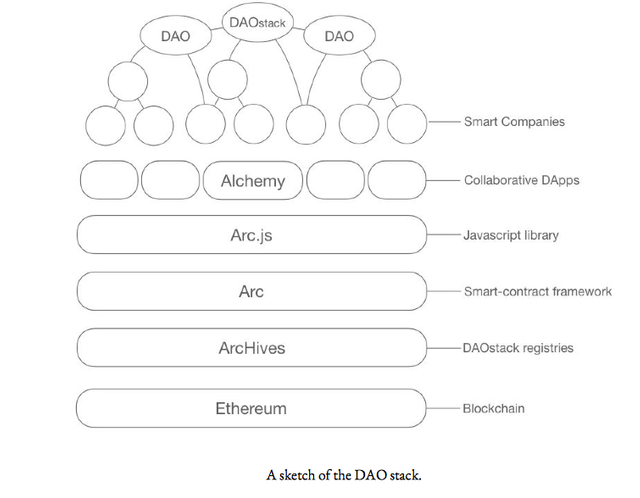

GEN Token and the econoimics of DAOstack.
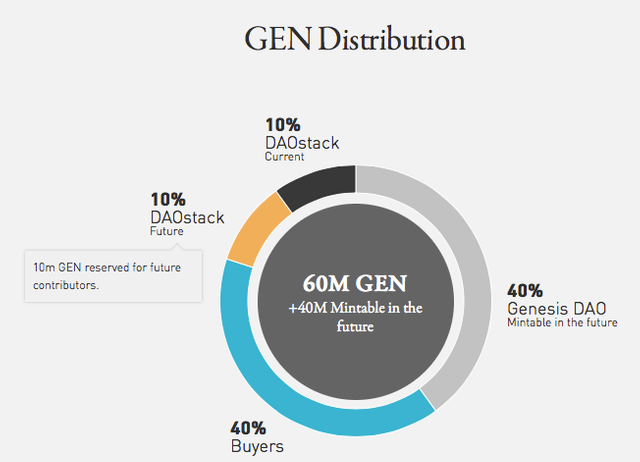
Gen is the Token of the DAOstack ecosystem and here are its characteristics.
- A decision making engine within a DAO
- Used by reputation holders to vote for and against proposals.
- Used to reward people who bring value to the DAO, ( e.i. developers)
- Used to boost proposals to bring more attention to the right people so they can vote.
- Used to flag proposals that may not be deemed valuable.
- Used to reward individuals who made a successful proposal.
- Gen is fungible and transferable.
- Gen cannot be taken without permission
- Reputation/vote power is not based on the amount of Gen Tokens an individual holds but on the value they bring to the DAO, such as a successful proposal, or backing of a successful proposal through staking their GEN tokens. Being on the losing side of a proposal will lower your reputation.
- DAOs can issue their own native Tokens, but GEN would be the GAS of the ecosystem as Ethereum is to ERC20 tokens.
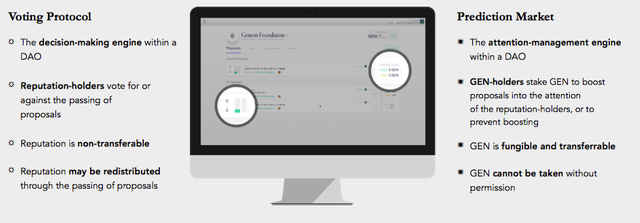

How DAOstack will change organization governance
DAOstack will change how organizations are operated by ridding it of rigid hierarchies and bureaucracy which hinders:
- Quick decision making.
- The power of harnessing the knowledge of the crowd.
- Growth and scalability.
- Adaptability
DAOstack allows individuals within the organization to put forward proposals in to the DAO database (by staking GEN Tokens) that they feel will lead to a better organization and it is voted upon by the agents within it. Proposals are given a time frame so that they do not go on for ages without a decision being made. Once a majority has decided, the new law/rule is automatically executed via smart contract and it is so. People who where for the now passed proposal earn reputation scores ( especially the individual who proposed it). And people who were against the proposal lose reputation score. This creates an attention funnel because it rewards them for participating and reduces their reputation for making "wrong"/ "unaligned" judgment.
Example
Legacy company vs DAOstack powered entity.
If an individual in the XYZ Legacy Company wants to purchase and implement a new accounting AI software it feels will benefit the entire organization, it first has to pass the information to the top of the hierarchy, usually one individual who makes the final decision. Many in the company may see this new software as a necessity to make the organization more efficient, but the top may not. Meetings, presentations and paper work along with other resources are used to try and prove to the top why it is needed. At the end of the day if it is decided, it is a long process that has wasted time, money and other resources. If they do not decide to use it, it is still a waste of resources and now employees who really saw this AI accounting software as an asset are left feeling disgruntled with no say in the organization leading to less productivity. They are not aligned with the goals of the organization but just with collecting a pay check. They may never make another proposal. They may even end up leaving the organization.

Using DAOstack, the individuals in the DAO would vote on this proposal put forth by a member of the organization who staked some of their GEN tokens, putting their reputation on the line for a cause they believe in. This would bring attention to the proposal. The creator of the DOA would have no super voting power because he created it. The proposal has a time limit of 1 week, so their is no time for egotistical unnecessary discussion. Each individual who is interested in the proposal ( or is of that network/department) could vote “yes” or “no” and the majority would rule. The Smart contract is executed and the new software is automatically purchased, downloaded and implemented. The individual who wrote the proposal now has a higher reputation score in the database as well as the individuals who were for the proposal. Time and money are saved but most importantly everyone who was interested in the proposal had their say. They have collaborated and their voices/votes heard. This new way of running an organization on the blockchain does something far beyond the technology and that is, it creates collectivism on a wide scale, efficiently. This is something that has never been done before but is now possible with DAOstack.

Organisations evolve through collectivism
The XYZ Legacy Company would have countless decision making problems as it tried to grow and with a culture of bureaucracy, it is sub scale-able, meaning the more it grows, the less effective it gets. DAOs are super-scale-able and become more effective the bigger they get. This is possible because the DAOstack operating system and its programmable code are the infrastructure of the organization and not rigid hierarchical structures at the whims of personality like that of legacy organizations. DAOs create a culture of collectivism which fosters scaling.
In a DAO individuals are more aligned with the greater good of the entity as they have a voice, they are rewarded according to the value they bring and the system creates an environment for collectivism to flourish. It makes DAOs more adaptable to changes as thousands or millions of people are looking out for the interest of the group and its mission. On a deeper level, they feel and are part of a team. Everyone is looking out for the next step to take the group forward, because they go with it. In legacy Organizations, the trend is promotion, raise and if a better opportunity comes I'm gone. Individuals focus on themselves and not the whole.
What about corruption in DAOs?
Because the decision making process is no longer in the hands of a few individuals, corruption is difficult. But even within DAOs, corruption is possible. DAOstack has implemented some features to prevent this such a queue system to ensure numerous decisions aren't being made at the same time. This prevents 51% attacks from taking place by proposals that get "lost" in the crowd allowing only few people to vote and pass a unscrupulous proposal like sending millions of dollars worth of tokens to a specified wallet. The queue system allows 10 proposals at a time ( or however the DAO wants to configure it). How these proposals are given urgency are based on the Gen Tokens staked. Now you might think this will cause whales to push their agenda up the queue, think again, remember they can be flagged back down the queue line if deemed not urgent or appropriate. DAOstack also has a feature called quiet ending that gives a proposal one more day to be voted upon in the case of last minute changes by voters or other underlying problems on the initial ending date.
Holographic Consensus which entails voting done by the relative majority that represents the whole. The deciding group allows any subset within itself, to make decisions on its behalf, under certain conditions.
Also, the proposal is monitored/audited by external parities who bet on proposals ( predict) by staking Gen tokens on an outcome. This is very unique and filters proposals so others will look more into the ones that people are betting on to give it more consideration or to bring attention to proposals individuals are betting against so concerns can be seen. This prediction can be done by anyone.
In holographic consensus we want to eliminate possible mismatches between decisions made by small groups on behalf of the greater majority and the decision that would have been made by the greater majority itself, if enough attention was available. To eliminate possible mismatches, we introduce a novel prediction game, in which anyone — not necessarily a DAO reputation holder — can place predictions, backed by stake, on the fate of proposals.

Other use cases
The main use cases of DAOstack falls into three main categories.
- Collaberation
- Shared ownership
- Curation
Lets give a brief example of the three.
Collaberation
DAOstack helps coordinated decision making of large numbers of people.
For example
- 5,000 people working on a new software and they are located all over the world. The operating system provides the tools to put forward proposals to all involved and have them vote on it in a timely manner. Speed and efficiency is created even with 5,000 people working on one project.
- 10,000 scientist working on a cure for cancer putting forth proposals for medicines to be tested in the real world. The more probable proposals would be passed by the majority and put to the test. This sharing of information would also lead to new ideas being created more rapidly, as ideas build on ideas. A cure for cancer would be faster to create this way. ( If they wanted to create a cure)
Shared ownership
This entails management of assets and the allocation of founds.
For example:
- An insurance company run by individuals who put money into a pool. When someone wants to claim insurance they make a proposal and other members would vote on its value and its credibility. Once passed the founds are automatically sent. Lower cost of insurance is possible and fraud can be spotted by individuals with experience/ reputation in the field.
- Venture founds owned by individuals who pool their money together. An individual within the DAO with a good reputation in finding startups submits a proposal to invest in a new AI technology company they believe will be profitable. Individuals within the DAO could vote on this proposal and once passed the founds are automatically sent. Individuals within the DAO without much reputation could also make a proposal and stake their Tokens to show how much they believe in the venture proposed. Others in the firm would take a look at it as it is "promoted" in a sense and vote accordingly. Individuals in the DAO with high reps could back it by stacking tokens and their reputation. Individuals not in the DAO could predict the outcome of the proposal ( if it will pass or not) giving attention to it, or detracting attention form it. If the proposal passes, the individuals who proposed it gets rewarded with Tokens and reputation. The outsider predictors benefit or lose accordingly.
Curation
Leveraging the wisdom of the crowd to bring quality to the top.
Imagine:
- Review sites such as yelp, bookings.com and TripAdvisor utilizing DAOstack to be ran in an acentric manner curbing corrupted practices such as paying individuals for reviews. Faulty reviews could easily be flagged and the individuals who did them would lose reputation scores. It would make individuals give reviews honestly and they would be able to gain from that.
- Curation of child friendly websites and video content streamlined by millions of individuals in a DAO offering such a child friendly search engine.
The possibilities are endless

The Team
This highly intelligent team ran by CEO and Architect, Matan Field who has been in blochchain since 2014 and is also an expert in decentralized governance. He also holds a PHD in physics. This PHD explains why he sees these relationships and makes these calculations that he has applied in the DAOstack. Listening to his talks on YouTube may not be the easiest to follow, but once you get it, you get it.
The team also consist of a scientist, blockchain experts, a legal and fiance expert, system engineer, communication officer and operations expert. All the experience is here and more.
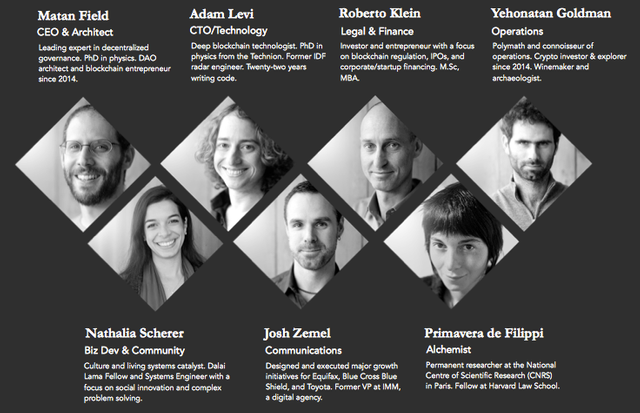
Advisors
The advisers all have experience in tech startups and most are renowned in the blockchain space. They are quite enthusiastic about DAOstack as many have appeared on podcast, google hangouts and other media outlet, giving well rounded discussions.
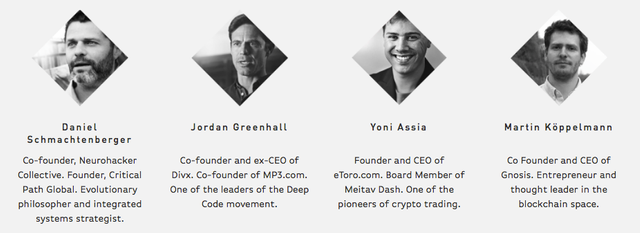

Final thoughts
DAOstack offers everything needed for a DAO to be up and running in no time. The sleek interface and built in plugins seem easy to configure especially for individuals who are familiar with website/blog creation ( which would be a majority of the people building DAOs). Though many may not understand the usecase for such a technology, individuals within the blockchain space can. There is no doubt that the world is heading towards decentralization and DAOstack has prepared the soil and the foundation for entities to take advantage of this movement now. This is a highly technical project and I advise you to read the white paper and watch a few videos to get a better understanding if you want to grasp the idea even better.

DAOstack intro video

ETHCC Keynote by Matan Field

For more information see the links below

DAOstack Summary
DAOstack WhitePaper
DAOstack Telegram
DAOstack Twitter
DAOstack Reddit
DAOstack Newsletter
DAOstack Github
DAOstack Medium
DAOstack YouTube
DAOstack Token Sale FAQ
This is a submission for an @originalworks contest
daostack2018
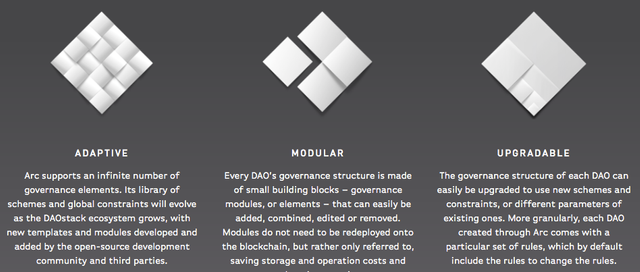
This post has been submitted for the OriginalWorks Sponsored contest!
You can also follow @contestbot to be notified of future contests!
Coins mentioned in post: